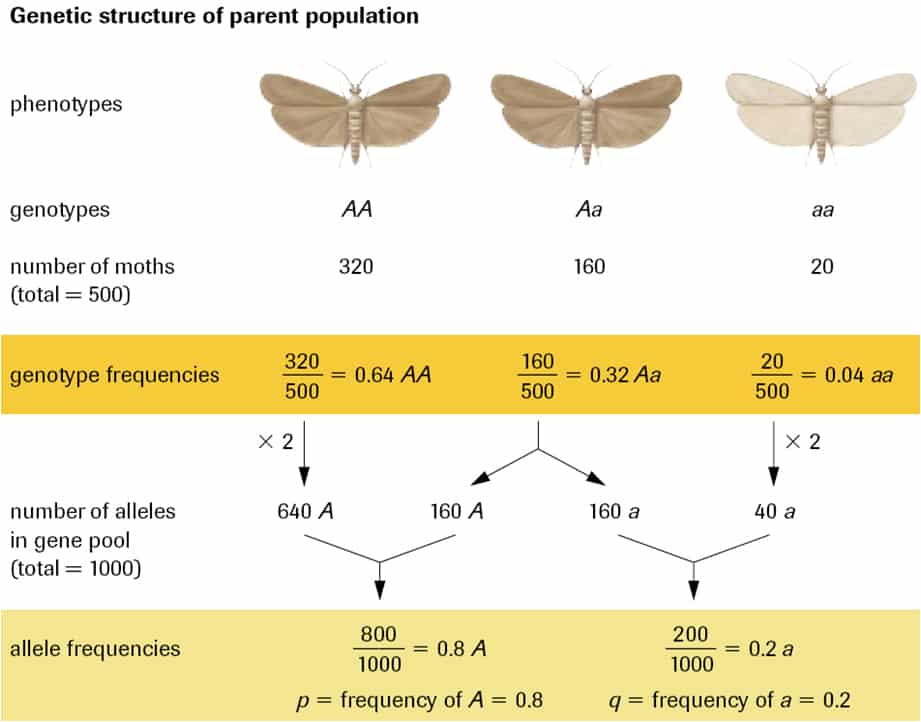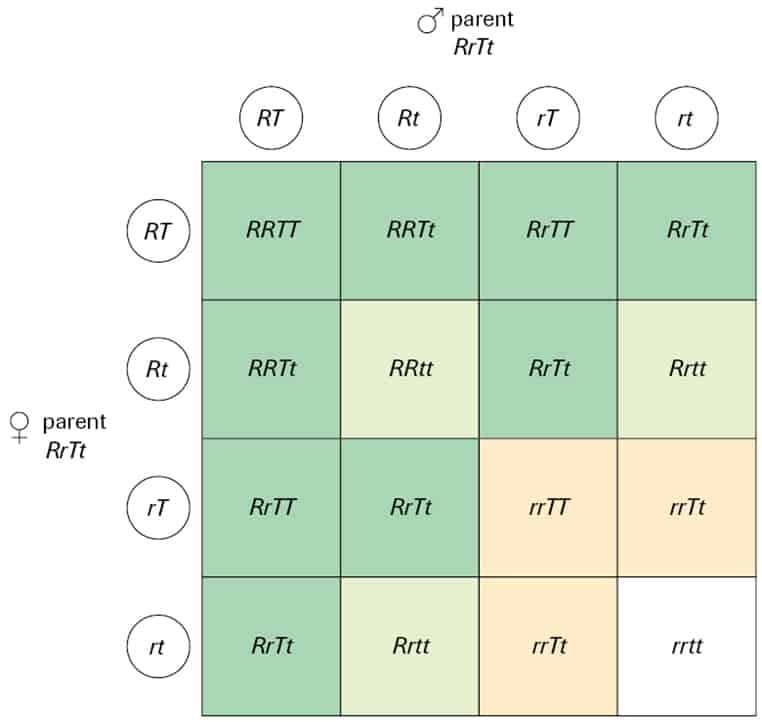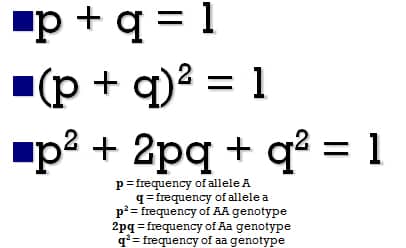Genetics Definitions
- Genes: portion of the DNA molecule that codes for a particular protein.
- Loci: location in the DNA molecule of the gene
- Alleles: forms of a gene
- Homozygous: paired alleles are identical
- Heterozygous: paired alleles are different
- Genotype: set of all alleles (i.e. genetic expression)
- Phenotype: all observable traits (i.e. physical expression)
- Genome: The complete set of chromosomes for an organism.
Genetic Variation
- Species that possess a greater number of genes have the potential for increased genetic diversity
- Similarly, the greater the number of different alleles for these genes, the greater the extent of genetic variation there will be within a species and from individual to individual
- Genetic diversity within a population increases enormously through sexual reproduction, as the various alleles from two parents recombine in each offspring
Hardy-Weinberg Principle
- Gene pool: The total number of all alleles within a population.
- Allele frequency: Within a species, the proportion of gene copies in a given allele.
- Population geneticists developed a method to quantify a gene pool by measuring allele frequency.

Hardy-Weinberg Formula
The Hardy Weinburg Principle
- Allele frequency will not change from generation to generation as long as:
- The population remains large.
- Mating opportunities are equal.
- No mutations occur.
- No migration occurs.
- No natural selection occurs. ie. All individuals have an equal chance at reproducing.
Sample Questions
- 1) A population has only two alleles, R and r, for a particular gene. The allele frequency of R is 30%. What are the frequencies of RR, Rr, and rr in the population?
- 2) A population has only two alleles, A and a, for a particular gene. The allele frequency of a is 25%. How many would have the genotypes of AA, Aa, and aa in a population of 150?
- 1) 0.09 RR, 0.42 Rr, 0.49 rr
- 2) 84.375 AA, 56.25 Aa, 9.375 aa


